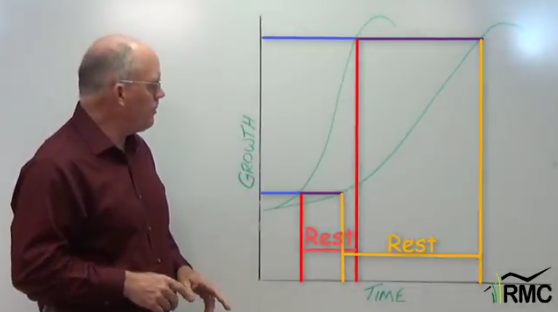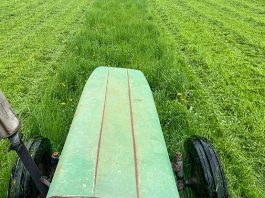 Most of us who have attended a grazing workshop or field day have received the gift of a grazing stick. I would guess, and would not be afraid to take bets, that the majority of those grazing sticks end up behind the seat of someone’s pickup or thrown in the corner of the office or feed room. After a few years of observing cattle operations in our state and spending hours talking with producers it is obvious that if the information on these sticks were to be put to use there could be drastic improvements in the grass management of most cattle outfits in my state of Louisiana and other states too. With that in mind, here’s how this stick can be invaluable to a producer.
Most of us who have attended a grazing workshop or field day have received the gift of a grazing stick. I would guess, and would not be afraid to take bets, that the majority of those grazing sticks end up behind the seat of someone’s pickup or thrown in the corner of the office or feed room. After a few years of observing cattle operations in our state and spending hours talking with producers it is obvious that if the information on these sticks were to be put to use there could be drastic improvements in the grass management of most cattle outfits in my state of Louisiana and other states too. With that in mind, here’s how this stick can be invaluable to a producer.
The first thing to do for effective grass management is to figure out the size of the pasture. For explanation purposes, we’ll use the acre as the unit of measurement. An acre of ground is 43,560 square feet and a square acre would be 208.71 feet per side. To figure the number of acres in a pasture that is a rectangle, multiply the length by the width and dived the sum by 43,560 to get the number of acres in a pasture. (These formulas are available in most pasture books and this is not intended to be a lesson in mathematics. But is is important to have some idea of the size of the pasture you are dealing with.)
To have some hope of being an effective grazing manager, there are some things that need to be known: 1) the size of the pasture; 2) amount of forage growing in the pasture; 3) number and type of animals to be grazed; 4) nutritional needs of the animals to be grazed; and 5) number of days the animals will be grazed in a given paddock.
Using the information on the grazing stick, let us do some cowboy arithmetic for a paddock with 1 acre of good ryegrass.
On the grazing stick find the heading “ESTIMATED FORAGE” (pounds of dry matter/acre inch). This is the amount of dry matter in each inch of the forage growing on our example acre. There is a heading entitled “STAND CONDITION” (% of cover). The Stand Condition is rated “Fair” to “Good” or “Excellent.” For our purposes we will use “Good.” Using the “FORAGE SPECIES” column we’ll find the species for our paddock: Ryegrass. Our example acre has a forage height of 8 inches, which we got by simply measuring the height of the forage over the acre with the grazing stick. Using the “Take Half, Leave Half” formula, that means there are 4 inches of rye grass available for grazing. The information on the grazing stick tells us that a “Good” stand of ryegrass contains 150-250 lbs. of dry matter forage per acre inch. Let’s take a 200 pound average of dry matter and multiply by 4 inches to get 800 pounds of available forage for use in this acre.
To keep our example as easy to understand as possible let us assume that we are planning to graze this 1 acre for 1 day. How many of what kind of animals will be grazed on this paddock for a day will determine how many can be grazed and while meeting their nutritional needs. Looking at the column on the stick labeled “LIVESTOCK TYPE” we will find that a lactating beef cow will need 2.5 to 3.5% of her body weight. The cow’s weight is 1,000 pounds, so she needs 30 pounds of dry forage per day. Now we know there are 800 pounds of available forage in our 1 acre paddock and we know that we are going to graze it for 1 day. How many 1000 pound cows will this paddock feed for 1 day? Divide the amount of available forage by the amount of forage for 1 lactating beef cow to get the number of cows that can be grazed effectively for 1 day.
800/30=26.66 cows
This is not complicated. Of course there are many variables to consider, but if the time is taken to learn how to use the grazing stick it can help you become a better grazing manager by increasing the utilization of the available forage and therefore reduce the costs of production.
That was easy! Grazing sticks are made for different states. Contact your local Natural Resources Conservation Service office to find out if there is one for your area.)





Thanks, Don, for the reminder. Also, if your pasture isn’t a rectangle, your computer is a handy tool. Try Google Maps Area Calculator-Daft Logic. You can find your farm on the map and calculate individual pastures of any shape.
Comments are closed.